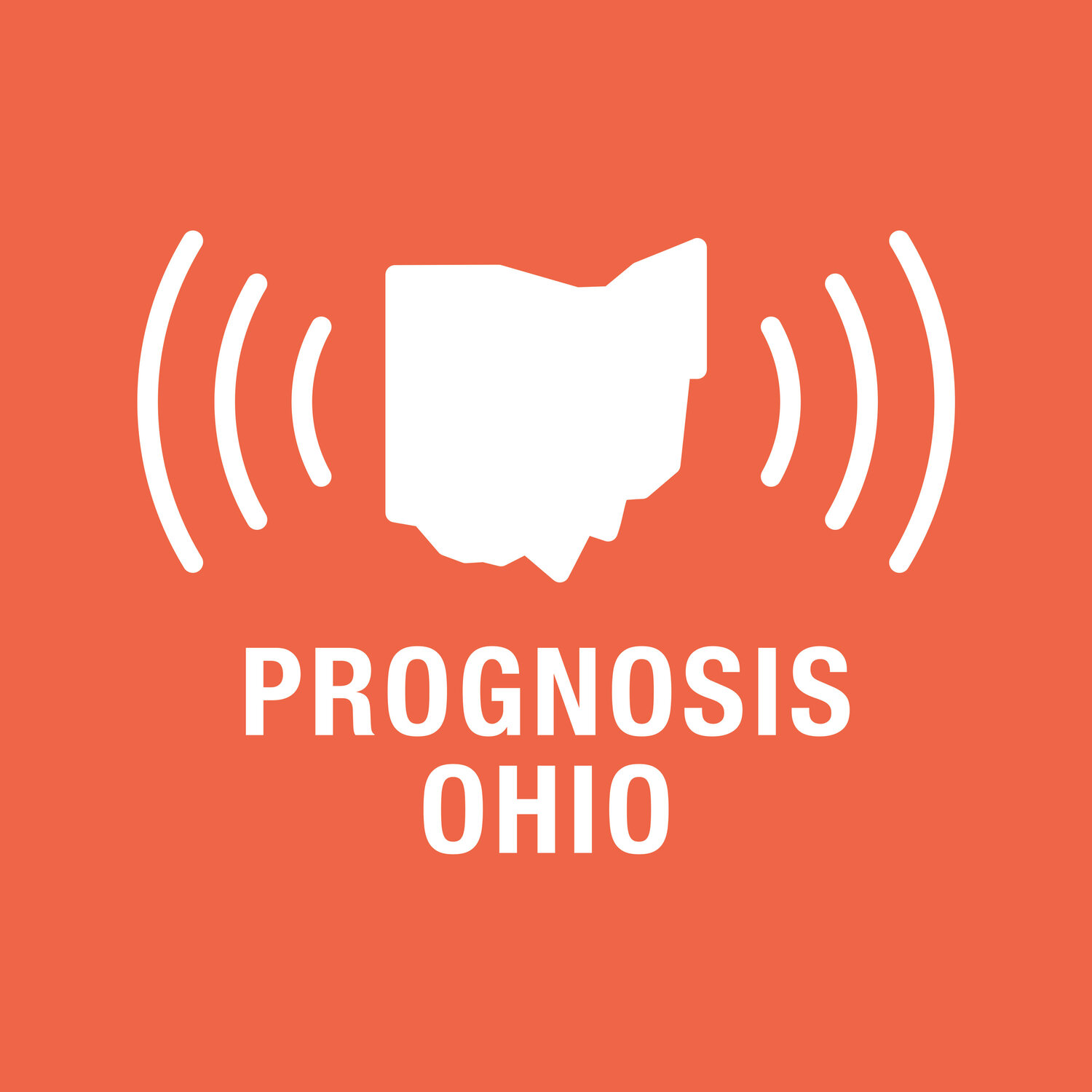116. Medicaid Expansion & Vision Care in Ohio: Drs. Dean VanNasdale and Andy Wapner of OSU
In the first installment of an ongoing collaboration Prognosis Ohio has formed with the Ohio Journal of Public Health, Dan Skinner talks with Dean VanNasdale and Andy Wapner from The Ohio State University about their recent article (with numerous colleagues) examining the state of vision care services and access under Medicaid in Ohio.
VanNasdale, who is a professor of optometry at the College of Optometry describes eye care as an underappreciated facet of public health. Preventive care is key for diseases such as macular degeneration, glaucoma, and cataracts in order to avoid permanent vision loss. VanNasdale offers particular insight into Ohio’s challenges–regional and otherwise–in standing up an adequate health care workforce to meet Ohio’s vision care needs.
Wapner, who heads up the Center for Public Health Practice and is a clinical professor at the College of Public Health, talks about the unique surveillance efforts from vision advocates that work with the Department of Health to proactively collect vision-related data. He also reminds us that while clinical medicine plays an important role, vision care in Ohio requires a robust public health approach.
Dan notes that the 2016 Eye Health Index identified Cleveland and Akron as two of the 10 least eye-healthy cities. There is a lot of helpful (and eye-opening!) data available from the census or Ohio Medicaid Assessment Survey to look at to begin piecing together a picture of the gaping disparities in vision healthcare.
The Behavioral Risk Factor Surveillance System found that those at a greater risk for vision loss remained the least likely to access or utilize these services. Even after the Affordable Care Act in 2010 and the expansion of Medicaid in Ohio, there hasn’t been an increase in utilization, which is true for vision care as well.
VanNasdale plugs the CDC’s Vision Health Initiative’s new vision loss economics explorer, which looks at the cost for various eye diseases and vision services in different states.
Read VanNasdale et al’s full paper in the Ohio Journal of Public Health. You can learn more about health insurance and eye care from Prevent Blindness. You can also read more about our guests, Dean VanNasdale and Andy Wapner.
THINGS YOU NEED TO KNOW
On Things You Need to Know, produced in collaboration with the Center for Community Solutions, we referenced an important brief on strategies for preventing adverse childhood events (ACEs), released by the Health Policy Institute of Ohio. HPIO also released an important report on the economic impact of ACEs. Read this Community Solutions piece on OhioRISE, which seeks to bring comprehensive, coordinated care and new and enhanced services to Ohio children and youth with complex needs. Listeners will also want to read this CDC report, which contains a series of “fast facts” for preventing ACEs.
NAME CHECKS
Wapner uplifts the collaboration among Ohio’s Department of Aging, OSU’s College of Optometry and College of Public Health, and the Ohio Affiliate of Prevent Blindness in partnership in building a broad coalition of vision advocates and working on the paper together.
RELATED EPISODES
70. Dentistry in Ohio: Dr. Sharon Parsons on Prevention, Pain, and Advocacy
51. Some Medicaid "Hot Takes" with Loren Anthes
PRODUCTION
Hosted and produced by Dan Skinner. Copywriting and production support by Angela Lin. “Things You Need To Know” written by Patti Carlyle and Dan Skinner. Prognosis Ohio is a member of the WCBE Podcast Experience and the Health Podcast Network. Prognosis Ohio is a production of Prognosis Ohio, LLC.
